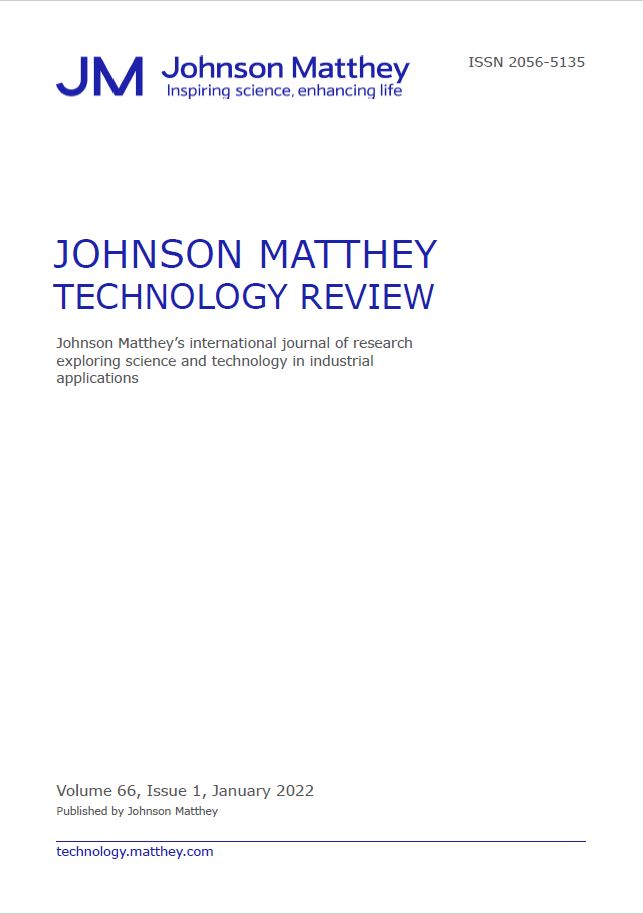-
oa Low Temperature and Pressure Single-Vessel Integrated Ammonia Synthesis and Separation using Commercial KATALCO Catalysts
Green ammonia synthesis using renewable energy
- Source: Johnson Matthey Technology Review, Volume 66, Issue 4, Oct 2022, p. 435 - 442
-
- 30 Mar 2022
- 05 Jul 2022
- 13 Jul 2022
Abstract
In recent years, the potential for ‘green’ ammonia produced from renewable energy has renewed the pursuit of a low-pressure, low-temperature ammonia synthesis process using novel catalysts capable of operating under these conditions. In past decades, the trend of decreasing the pressure in the existing Haber-Bosch process to the de facto limit of condensation at 80 bar has been achieved through catalysts such as Johnson Matthey’s (formally ICI, UK) iron-based KATALCOTM 74-1. By replacing the separation of ammonia via condensation by absorption, the process loop can be integrated into a single vessel at constant temperature, and the operating region drastically shifts to lower pressures (<30 bar) and temperatures (<380°C) unknown to commercial catalysts. Herein, the low-temperature and low-pressure activity of KATALCO 74-1 and KATALCO 35-8A catalysts is studied and compared to a ruthenium and caesium on ceria catalyst known to have low-temperature activity through resistance to hydrogen inhibition. Due to its low temperature and high conversion activity, KATALCO 74-1 can be deployed in an integrated reaction and absorptive-separation using MnCl2/SiO2 as absorbent. Although further catalyst development is needed to increase compatibility with the absorbent in a feasible reactor design, this study clearly demonstrates the need to re-evaluate the viability of commercial ammonia synthesis catalysts, especially iron-based ones, for their deployment on novel green ammonia synthesis processes driven exclusively by renewable energy.


